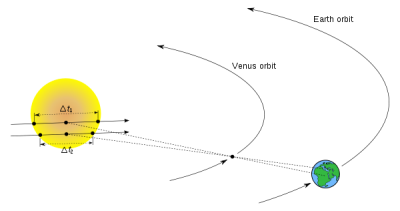How do scientists know the distance of the Sun?

Radar cannot be used to work out the distance of the sun because it is not solid. Instead, astronomers base their calculations on the law of planetary motion. This is the third law discovered by the astronomical Johannes Kepler (1571-1630) in 1618. It states that the square of the time it takes for a planet to complete a journey around the sun (the orbital period) is equal to the cube of the planets mean distance from the sun.
Using Kepler’s law, astronomers could calculate the average distance of the earth from the sun. This value is now known to be 92,955,630 miles (149,597,870km). The Earth-Sun distance is defined as one unit, called an astronomical unit, or AU. Astronomers use this unit to calculate how far the other planets are from the Sun. First they must find the distance from the Earth to the planet. To do so they can use either Parallax or radar.
Using radar, it is possible to tell, for example, that the distance of Venus from Earth, when the two are at their closest, is 26,000,000 miles (42,000,000 km). But astronomers also know that it takes Venus 224.7 days (or .615 of the year) to orbit the sun. According to Kepler‘s law, then, Venus’s distance from the sun is .72AU (since .615 of a year’s equals .72AU cubed).
Picture Credit : Google
